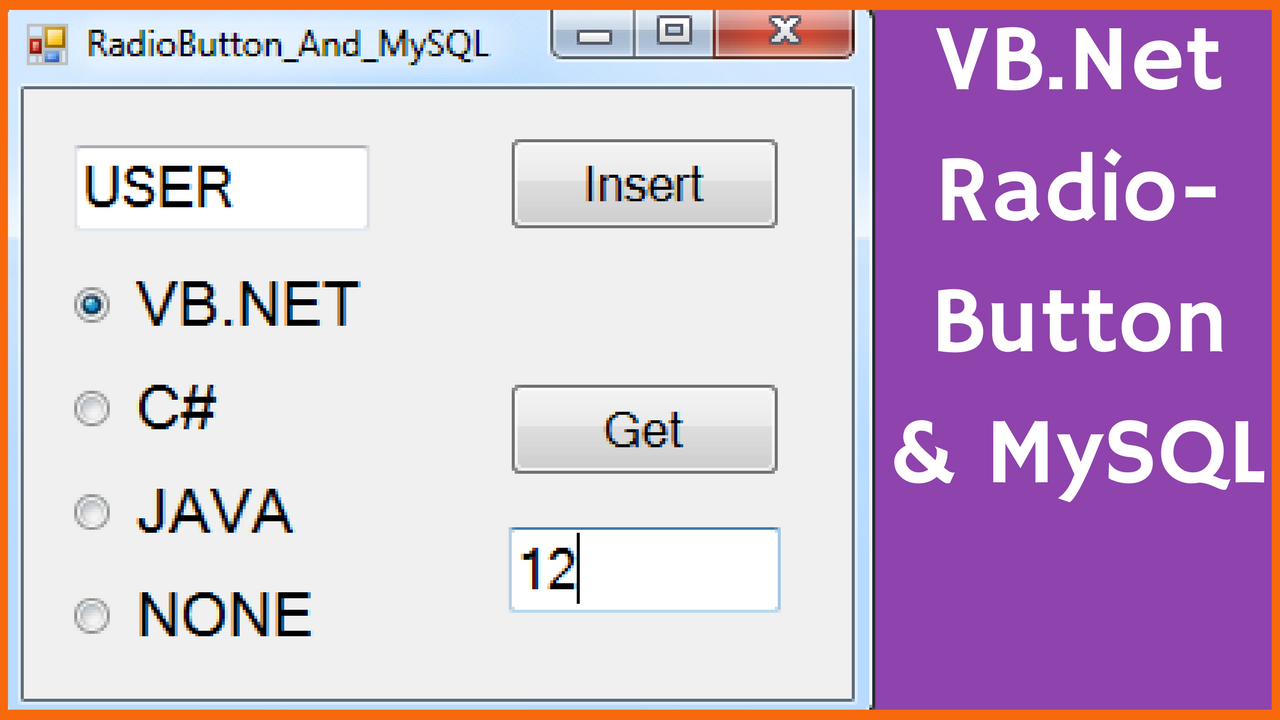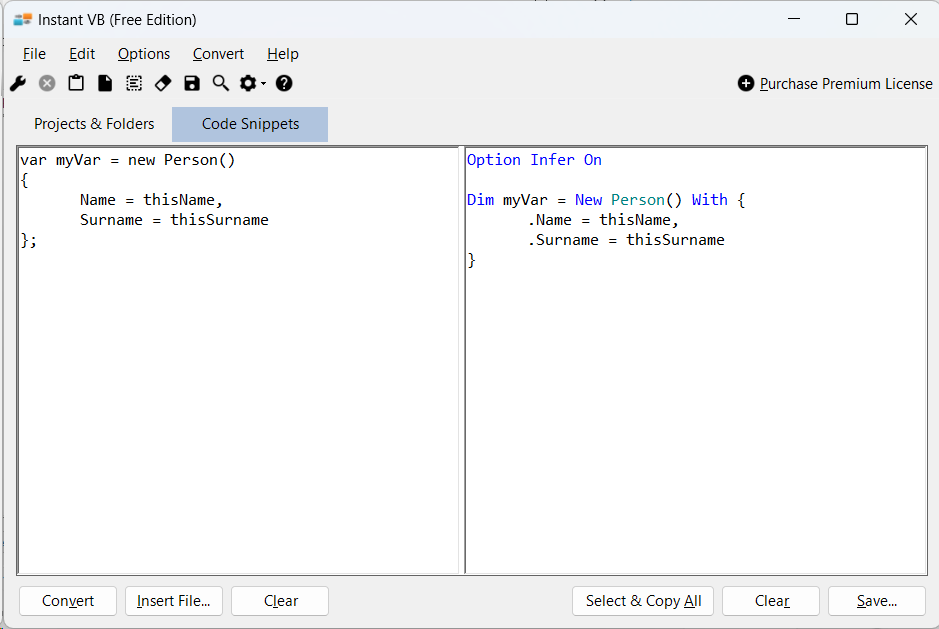


LCase() - stringVar.ToLower() use this in VB too.UCase() - stringVar.ToUpper() use this in VB too.Len() - stringVar.Length use this in VB too.Chr() - Convert.ToChar() or (char)someVar.Use Is Nothing in VB.Net and = null in C# LBound() - obsolete, lower bound is always 0 in a normal.That means you shouldn't use them in VB.net either, and instead use the equivalents provided by the new API. They are functions, and the functions are only included in VB.Net for compatibility reasons. Instead of throwing an exception, these will return Nothing.įirst of all, most of those are NOT operators. You can also pass Nothing to the classic VB Mid() and Replace() functions.Running string methods on Nothing will, of course, throw an exception. The Many classic VB String functions, including Len(), UCase(), LCase(), Right(), RTrim(), and Trim(), will treat an argument of Nothing ( Null in c#) as being equivalent to a zero-length string.This could matter if there are side effects of the evaluation ~ shudder! ? is not the exact equivalent of IIf because IIf always evaluates both arguments, and ? only evaluates the one it needs.The VB string functions uses a one based index, while the.UBound() in VB.NET will return -1 for zero-length arrays. yourArray.GetUpperBound(0) vs yourArray.Length: if the array is zero-length, GetUpperBound will return -1, while Length will return 0.IIF() = (boolean_condition ? "true" : "false")

You can also pass Nothing to the classic VB Mid () and Replace. Mid() = "string".Substring(start, length) The Many classic VB String functions, including Len (), UCase (), LCase (), Right (), RTrim (), and Trim (), will treat an argument of Nothing ( Null in c) as being equivalent to a zero-length string. Right() = "string".Substring("string".Length - desiredLength) IsNothing() = Object.ReferenceEquals(obj,null) With a bunch of Nothings and default values (zeros) instead of whatever gibberish the memory that the structure occupies happened to have in it at the time you decided to use it.UBound() = yourArray.GetUpperBound(0) or yourArray.Length for one-dimesional arrays So when you create an IconTexture it starts out The value types get their default value, the reference types get the null reference (Nothing). In VB.Net your structure gets a default constructor that initialses all the fields to their default values. So the C++ structure has an initialiser to initialise the field called data. Happens to be stored in that memory location - it could be anything.
#C to vb.net code
C++ trusts the programmer knows what they are doing and will not use memory that has not been initialised. If you don't initialise your variables in C++ and use them then they will have whatever value Did you write C/C++ code yourself or is from someone As i said in my first post, sometimes is pain in the neck to know exact data type when converting C/C++ to. You don't need to copy the C++ constructor though. Net chars use 2 bytes of memory, C chars use 1 byte of memory. The data field of the structure should be Byte.


 0 kommentar(er)
0 kommentar(er)
